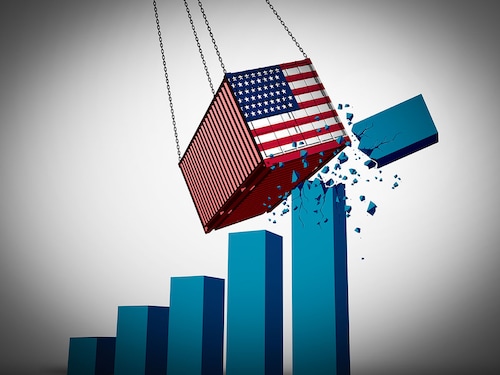Why has the U.S. been running a trade account deficit for so many years?
Understanding why this deficit persists requires us to explore the key economic drivers behind it and the broader implications of the U.S.'s role in the global financial system


Have you ever wondered how the world’s largest economy consistently spends more than it earns? The United States has consistently maintained a trade account deficit alongside a capital and financial account surplus for decades, reflecting a long-standing imbalance between imports, exports, and financial flows.
This phenomenon is deeply rooted in structural economic factors, global financial dynamics, and policy decisions. Understanding why this deficit persists requires us to explore the key economic drivers behind it and the broader implications of the U.S."s role in the global financial system.
One of the primary reasons for the U.S. current account deficit is the spending habits of American consumers and the government’s fiscal policies. Several factors contribute to this high level of consumption:
â— Low Savings Rates: American households tend to save less compared to their counterparts in countries such as Germany and China, where savings rates are significantly higher. The U.S. economy is largely consumption-driven, with personal consumption expenditures accounting for nearly 70% of gross domestic product (GDP).
â— Easy Access to Credit: The U.S. financial system is structured to facilitate borrowing, providing widespread access to consumer credit, mortgages, and other lending products.
â— Government Deficit Spending: The federal government consistently runs budget deficits, spending beyond its revenue collections. To finance these shortfalls, it relies on borrowing, primarily through the issuance of Treasury securities. These securities are frequently acquired by foreign investors, further exacerbating the current account imbalance.
Over the past several decades, the U.S. has experienced a decline in manufacturing competitiveness, particularly in comparison to emerging economies. Countries such as China and India have leveraged lower labor costs, efficient supply chains, and strategic government policies to become dominant players in global manufacturing. Key challenges affecting U.S. manufacturing competitiveness include:
The U.S. dollar (USD) plays a pivotal role in international finance as the world"s primary reserve currency. Its status leads to heightened demand for dollars globally, which significantly influences U.S. trade dynamics:
The strength of the U.S. economy, its stable political environment, deep financial markets, strong rule of law, and the USD’s role as the global reserve currency have attracted substantial foreign investment. Major contributors to foreign capital inflows include:
The United States" persistent current account deficit is a multifaceted issue shaped by consumer behavior, manufacturing trends, fiscal policies, and global financial structures. Its role as the issuer of the world"s primary reserve currency, combined with its reliance on foreign capital, creates an economic dynamic that sustains this imbalance. This system reflects the broader complexities of international trade and investment.
Prof Xu Peng is Professor of Management Practice in Finance, and Associate Academic Director, Master in Finance at ESSEC Business School Asia Pacific
First Published: May 22, 2025, 11:30
Subscribe Now